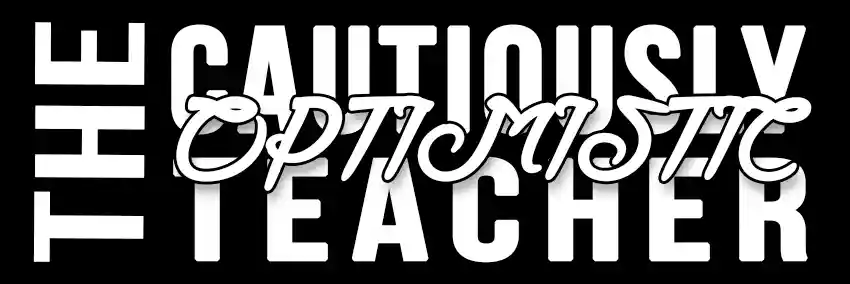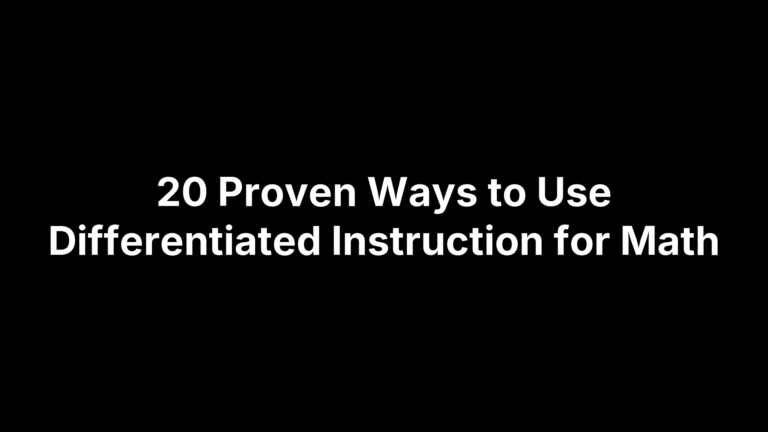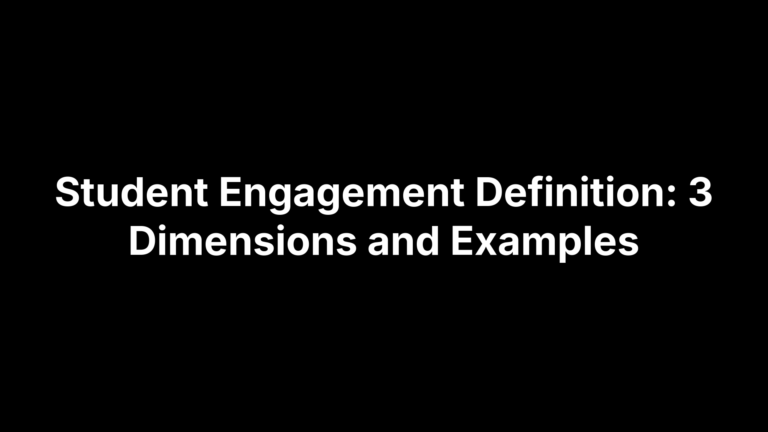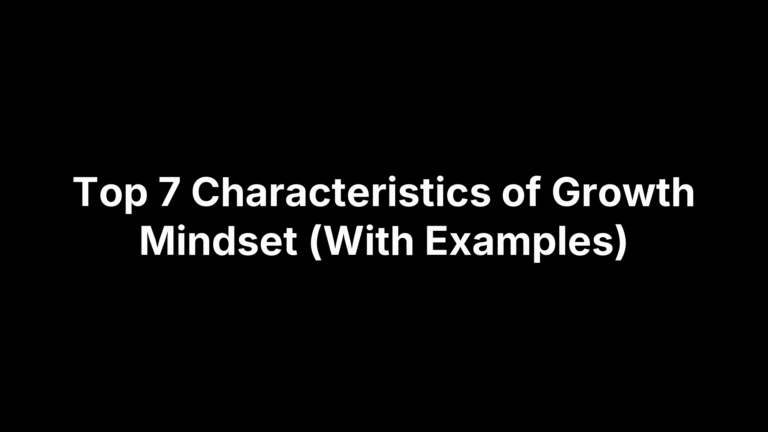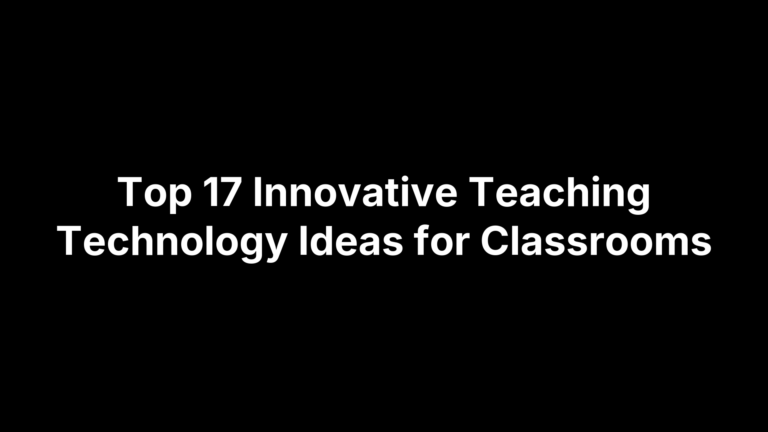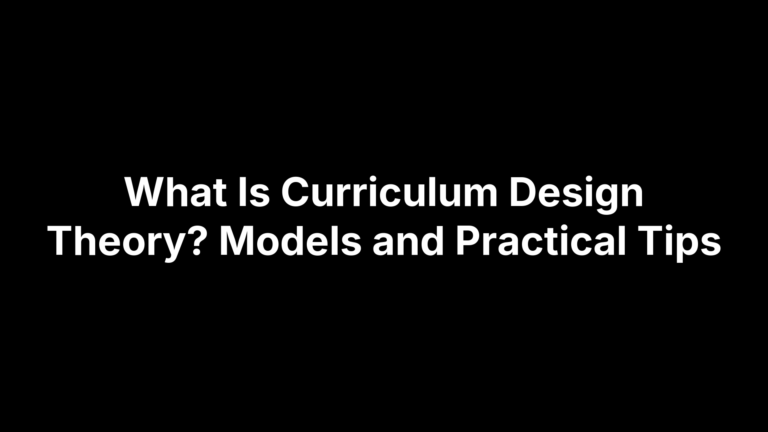Report Card Comments for Struggling Students: Honest, Hopeful, and Specific
That blinking cursor on your grade-book comment box can feel more intimidating than a class of restless eighth-graders. You want language that is honest yet hopeful, specific yet quick to produce—and you need it for every learner who’s still wrestling with academics, behavior, or social-emotional skills. This article hands you a bank of 120 copy-and-paste sentences ready to cover decoding setbacks, missed homework, off-task chatter, confidence dips, and more.
Beyond the list itself, you’ll find the why and the how: guiding principles that keep your wording legally sound and growth-oriented, a sortable table by struggle type, deeper examples for tricky subjects, customization tricks that preserve voice, and a quick FAQ for last-minute checks. By the end, you’ll spend less time agonizing over phrasing and more time partnering with families to move students forward.
Bookmark it now; your future self, staring at the next report-card deadline, will thank you.
1. Guiding Principles for Constructive Report Card Comments
Every report-card line becomes part of a student’s permanent record, a family conversation starter, and—when done well—a catalyst for growth. Clear, respectful language protects you legally, informs caregivers, and shows students you see their effort as well as their obstacles.
Aim for a “warm-demanding” tone: high expectations wrapped in genuine care. Most districts favor a three-step structure:
- Start with a concrete strength.
- State the area that still needs work.
- Close with the next step or support you’ll provide.
Balancing Honesty and Empathy
Separate the behavior from the child and anchor criticism in observable facts. A quick “feedback sandwich” keeps comments actionable, not personal:
- Strength: “Jaden contributes thoughtful ideas during discussions.”
- Need: “He struggles to stay on task during independent work.”
- Next step: “Consistent use of a timer will help him monitor focus.”
Avoid surprises—your written notes should echo what you’ve discussed in conferences or progress reports.
Using Growth-Mindset Language
Replace fixed or deficit phrases with wording that highlights progress and effort.
Common rewrites:
- “Can’t grasp multiplication” → “Is still developing fluency with multiplication facts.”
- “Gives up easily” → “Benefits from strategies that build perseverance when tasks feel challenging.”
- “Not a good reader” → “Is strengthening decoding skills and building confidence through guided practice.”
Small shifts like “yet” and “still working on” communicate that improvement is expected and attainable.
Aligning with Standards, IEPs, and RTI Documentation
Tie every concern to a standard, goal, or data point to keep feedback defensible:
- “Has met 60 % of Grade 5 reading-comprehension benchmarks; will focus on inferring author’s purpose (RI.5.6).”
For students with plans: - “According to her IEP goal #2, Maya reads 95 wpm with 90 % accuracy when allowed text-to-speech.”
Never mention diagnoses or medication—stick to classroom performance and the accommodations you implement.
2. Quick-Reference Table: 120 Ready-to-Use Comments by Category
Skim, copy, paste—done. The table below delivers 120 growth-oriented report card comments for struggling students, sorted by the skill sets teachers most frequently evaluate. Each sentence is trimmed to fit tight report-card character limits while still pointing families toward specific next steps.
| Category | 10 Example Comments |
|---|---|
| Reading | 1. Building fluency; needs daily repeated reading. 2. Comprehension improves with graphic organizer scaffolds. 3. Struggles decoding multisyllabic words without prompting. 4. Benefits from echo reading for accuracy. 5. Still developing vocabulary for grade texts. 6. Requires guided practice inferring author’s intent. 7. Reading stamina limited; breaks increase success. 8. Progress monitoring shows slow but steady gains. 9. Uses picture cues; transitioning to phonics strategies. 10. Enjoys listening activities; building independent engagement. |
| Writing | 1. Ideas emerging; needs structure to organize. 2. Spelling errors persist despite word study. 3. Handwriting legible when reminded about spacing. 4. Sentence variety developing with mentor examples. 5. Slow drafting; voice-to-text boosts output. 6. Benefits from graphic organizer before writing. 7. Still learning paragraph transitions and closure. 8. Grammar accuracy improving with targeted feedback. 9. Resists revising; conferencing builds willingness. 10. Writing stamina increases with timed sessions. |
| Math | 1. Fact fluency limited; daily practice recommended. 2. Misapplies steps in multi-step problems. 3. Anxiety evident; reassurance improves participation. 4. Needs manipulatives to grasp regrouping. 5. Struggles interpreting word problems independently. 6. Progressing on fractions with visual models. 7. Benefits from guided notes during instruction. 8. Computational errors decrease with calculator check. 9. Still developing math vocabulary for reasoning. 10. Perseverance growing through error-analysis activities. |
| Science / Social Studies | 1. Concepts stick when paired with hands-on labs. 2. Difficulty summarizing nonfiction articles concisely. 3. Needs prompting to use text evidence. 4. Struggles connecting cause-effect across eras. 5. Graphic organizers aid understanding scientific processes. 6. Vocabulary retention improved by flashcard review. 7. Prefers demonstrations over reading dense explanations. 8. Developing hypothesis writing with sentence frames. 9. Requires support interpreting charts and graphs. 10. Participation increases during group investigations. |
| Participation | 1. Rarely volunteers; warm-up questions help. 2. Speaks softly; needs confidence practicing aloud. 3. Engages actively during partner discussions. 4. Participation fluctuates with lesson interest level. 5. Positive contributions after wait-time reminders. 6. Still learning to raise hand consistently. 7. Prefers observing before sharing new ideas. 8. Contributions insightful when called upon. 9. Group roles encourage consistent engagement. 10. Attendance impacts regular participation opportunities. |
| Attention & Focus | 1. Easily distracted; seating change improved focus. 2. Needs redirection returning to assigned tasks. 3. Benefits from chunked instructions and visuals. 4. Maintains attention ten minutes without prompting. 5. Technology temptations hinder sustained concentration. 6. Self-monitoring checklist increasing on-task minutes. 7. Fidgets; movement breaks support regulation. 8. Loses place reading multi-step directions. 9. Focus sharp during hands-on activities. 10. Fatigue after lunch reduces alertness. |
| Organization | 1. Desk cluttered; scheduled clean-ups help. 2. Forgets materials; binder checklist recommended. 3. Planner entries inconsistent; modeling provided daily. 4. Files digital work inconsistently in folders. 5. Uses color coding to separate subjects. 6. Still learning to label assignments correctly. 7. Misplaces homework despite backpack routine. 8. Portfolio missing exemplars for reflection. 9. Finds materials faster with picture cues. 10. Improvement seen after peer-model demonstrations. |
| Work Completion | 1. Frequently submits tasks incomplete or late. 2. Needs timeline broken into mini deadlines. 3. Completes work with one-on-one prompting. 4. Refuses assignments perceived too difficult. 5. Finishing rates higher using timer goal. 6. Redoes work willingly for higher accuracy. 7. Accuracy drops rushing near dismissal bell. 8. Makeup work backlog requires parental support. 9. Stamina rising; completed benchmark assessment today. 10. Extension choices motivate finishing independent tasks. |
| Behavior & Self-Control | 1. Calls out; practicing hand raise etiquette. 2. Reacts strongly to peer feedback. 3. Accepts redirection respectfully most times. 4. Transitions smoothly after visual countdown cues. 5. Noise level during group work improving. 6. Needs reminders respecting personal space boundaries. 7. Displays leadership when behavior expectations clear. 8. Periodic outbursts decreasing with coping strategies. 9. Responds well to positive behavior chart. 10. Reflects on actions using think sheet. |
| Motivation & Effort | 1. Gives minimal effort unless choices offered. 2. Perseverance growing through goal-setting conferences. 3. Celebrates small wins enthusiastically. 4. Needs encouragement starting challenging tasks. 5. Seeks praise; building intrinsic motivation. 6. Effort spikes when tasks feel relevant. 7. Occasionally rushes, leading to careless mistakes. 8. Responds positively to peer accountability partners. 9. Maintains effort during multi-day projects. 10. Attitude improves after clear success criteria. |
| Social Skills | 1. Interrupts peers; practicing active listening cues. 2. Shares materials willingly when reminded. 3. Resolves conflicts using teacher-modeled language. 4. Enjoys cooperative games strengthening teamwork. 5. Dominates conversation; learning turn-taking strategies. 6. Friendships growing through lunch-bunch group. 7. Seeks teacher mediation quickly during disagreements. 8. Shows empathy noticing others’ feelings. 9. Participation rises in small groups first. 10. Needs practice interpreting non-verbal cues. |
| Self-Advocacy / Resilience | 1. Hesitant asking questions during instruction. 2. Accepts feedback, then revises independently. 3. Benefits from rehearsal before presentations. 4. Developing positive self-talk during setbacks. 5. Uses anchor charts before requesting assistance. 6. Needs prompting to attend tutoring sessions. 7. Bounces back quickly after mistakes now. 8. Sets personal goals and tracks progress. 9. Advocates quietly; practicing assertive communication. 10. Chooses challenging tasks with minimal prodding. |
How to Navigate and Adapt the Table
Use Ctrl + F (or ⌘ + F) to jump straight to any category, then “find & replace” student names and pronouns. When pasting into a digital gradebook, you can color-code or tag each comment—green for Academics (A), yellow for Behavior (B), blue for Social-Emotional (S). This quick visual shorthand helps colleagues and families immediately understand the support area.
Editable Language Cues
Square brackets mark swap-in spots like “[he/she]”, “[due date]”, or “[85 % accuracy]”. Add qualifiers—“with support”, “when prompted”, “independently”—to calibrate rigor. Match tense to purpose: use past tense for achievements, present progressive for ongoing goals, and future tense when pairing these phrases with the goal statements in Section 6. A quick read-aloud ensures tone remains constructive and respectful.
3. Academic Struggles: Detailed Comment Examples
Numbers and check boxes are useful, but the most effective report card comments for struggling students translate assessment data into family-friendly language and a doable plan. Use the subject-specific sentences below when your quick-reference table (Section 2) needs more nuance. Each mini-bank starts with a short description of how the struggle typically shows up in class, followed by ready-to-paste statements you can tweak to fit individual evidence (reading levels, fact-fluency scores, rubric points, etc.).
Reading Difficulties
Students may read haltingly, skip words, or retell only surface details. Tie comments to running-record data or intervention notes.
- Reads grade-level text at 70 wpm; building fluency through repeated readings.
- Uses beginning-sound clues but still developing multisyllabic decoding skills.
- Comprehension improves when text is chunked and previewed together.
- Benefits from guided “whisper reading” to monitor accuracy.
- Relies on pictures; transitioning to phonics strategies with support.
- Struggles to infer character motives; graphic organizers aid thinking.
- Reading stamina reaches 10 minutes; goal is 15 by quarter end.
- Demonstrates confidence during read-aloud but hesitates independently.
Mathematics Challenges
Look for error patterns in exit tickets, math journals, or CBM probes and reference specific supports.
- Knows steps for long division but misplaces digits without grid paper.
- Computing facts to 20 is slow; daily XtraMath practice recommended.
- Anxiety lessens when manipulatives introduce new concepts first.
- Word-problem comprehension grows using CUBES strategy.
- Needs prompting to label units, leading to misinterpreted answers.
- Visual fraction models boost understanding of equivalent values.
- Perseverance evident; checks work with calculator after hand computation.
- Math vocabulary (“quotient,” “perimeter”) still developing through flash cards.
Writing and Written Expression
Struggles appear in idea generation, organization, or mechanics—show caregivers where you collect evidence (writing folders, Google Docs revision history).
- Generates solid ideas but needs outline to maintain logical flow.
- Sentences begin the same; mentor texts model variety.
- Capitalization and punctuation improve after peer edit checklist.
- Writes slowly; voice-to-text increases output and confidence.
- Reluctant to revise; teacher conferences now scheduled twice weekly.
- Spelling errors persist; individualized word wall provided.
- Paragraph transitions emerging with color-coded drafting.
- Legibility increases when reminded of proper pencil grip.
Cross-Curricular Comprehension & Study Skills
When grades dip across subjects, focus on how the student processes information rather than isolated facts.
- Summarizes key points orally but struggles to capture them in notes.
- Needs explicit instruction using context clues for academic vocabulary.
- Graphic organizers help connect historical cause and effect.
- Misplaces study guides; binder system introduced this term.
- Applies science concepts during labs yet falters on written analysis.
- Benefits from pre-teaching of question stems (“compare,” “justify”).
- Cornell notes boost retention; practicing weekly in class.
- Still developing test-taking stamina; short practice quizzes show growth.
4. Behavior and Engagement Challenges: Detailed Comment Examples
Missing materials, side-conversations, and digital rabbit holes can sink learning gains just as quickly as academic gaps. Families need to know what you see, the skill you are teaching to replace it, and the support you will continue providing. The comment banks below frame behavior as learnable—not personal—and leave the door open for collaboration.
Attention and On-Task Behavior
These comments fit students who drift during direct instruction, lose focus mid-assignment, or struggle to manage classroom tech responsibly.
- Becomes distracted after ten minutes; timers and stretch breaks are boosting stamina.
- Frequently checks personal device; locking it away improves sustained attention.
- Needs verbal prompt to return to independent work once conversation begins.
- Focus sharpens when task directions are chunked and displayed visually.
- Benefits from preferential seating away from high-traffic areas.
- Uses fidget tool appropriately to maintain engagement during lectures.
- Self-monitoring chart shows increasing on-task minutes each week.
- Participates actively in labs yet day-dreams during note-taking; alternating formats helps.
Task Completion & Organization
Use when late work, forgotten supplies, or multi-step confusion hold a student back.
- Completes assignments only in class; home checklist will support follow-through.
- Misplaces papers; color-coded folders introduced and practiced daily.
- Starts tasks promptly but rushes final steps, leading to avoidable errors.
- Needs scaffolded planner entries to remember project checkpoints.
- Backpack clean-outs every Friday are reducing missing-work incidents.
- Benefits from visual schedule taped inside notebook for quick reference.
- Still learning to prioritize tasks; conferencing helps break projects into parts.
- Completes makeup work after reminders; goal is independent tracking next term.
Classroom Conduct and Self-Control
When behavior impacts peers, keep wording factual and replacement-skill oriented.
- Calls out answers; practicing hand-raising and wait-time strategies in small group.
- Reacts strongly to peer critique; role-playing respectful responses shows promise.
- Voice level rises during excitement; volume scale posted on desk aids regulation.
- Needs reminders to respect personal space while lining up and during stations.
- Conflict resolution improving through counselor-led lunch group sessions.
- Accepts redirection calmly; now self-corrects after visual cue 70 % of the time.
- Chooses seat near positive role models to support constructive participation.
- Reflects on behavior using think sheet, then outlines next-step plan independently.
5. Social-Emotional and Soft-Skill Concerns
Grades don’t live in a vacuum—students’ ability to collaborate, manage feelings, and speak up for help directly affects academic outcomes. Many districts now assign separate scores for social-emotional learning, so report card comments for struggling students should capture these competencies with the same specificity you give to reading or math. The statements below frame soft-skill gaps as teachable behaviors and outline concrete supports you are providing or recommending.
Peer Interactions and Cooperation
A student who clashes with group members today can still become tomorrow’s trusted teammate. Use language that highlights progress, clarifies the missing skill, and points to collaborative next steps.
- Participates in group tasks when assigned a clear role; still practicing shared decision-making.
- Needs reminders to listen without interrupting during partner discussions.
- Responds well to praise for respectful disagreement; goal is to initiate it independently.
- Benefits from teacher-modeled sentence starters to acknowledge peer ideas.
- Chooses the same friend each time; expanding partnerships will strengthen flexibility.
- Increasingly offers materials to others when prompted—evidence of growing generosity.
Confidence and Risk-Taking
Low confidence often hides behind perfectionism or task avoidance. These comments focus on safe risk-taking and incremental wins.
- Hesitates to answer unless absolutely sure; encouraging “try-it” mindset in low-stakes activities.
- Avoids public speaking; rehearsals with small audience are building poise.
- Prefers easy assignments; goal-setting conferences now target appropriately challenging tasks.
- Begins work only after multiple check-ins; self-talk script is boosting independence.
- Celebrates small successes with genuine pride—momentum we’ll keep nurturing.
- Demonstrates creativity privately; sharing ideas aloud is the next milestone.
Emotional Regulation and Coping Strategies
Emotional regulation underpins attention, behavior, and resilience. Keep remarks observational and solution-oriented.
- Frustration surfaces quickly when directions change; visual schedule reduces anxiety.
- Uses breathing card to calm after peer conflict but needs prompt to access it.
- Tears up over uncorrected mistakes; growth-mindset reflections are helping reframe errors.
- Seeks adult reassurance frequently; goal is to try coping strategy first, then ask.
- Anger outbursts shrinking from daily to weekly with counselor’s check-ins.
- Accurately identifies emotions during “Feelings Check,” a strong foundation for further work.
Self-Advocacy and Independence
Self-advocacy turns passive learners into active partners. Highlight when the student requests resources or clarifies expectations.
- Rarely asks clarifying questions; scripted stems (“Could you repeat…?”) encourage practice.
- Uses anchor charts before seeking teacher help—evidence of growing resourcefulness.
- Schedules makeup quizzes independently, showing ownership of learning.
- Needs reminders to attend support block; electronic calendar alerts added.
- Politely declines assistance even when struggling; coaching on assertive help-seeking underway.
- Tracks personal reading goal on chart and adjusts strategies when progress stalls.
6. Goal-Setting and Next-Step Statements
A strong report card comment doesn’t end with what isn’t working—it points to what happens next. Administrators often look for SMART language: goals that are Specific, Measurable, Attainable, Relevant, and Time‐bound. Pair the concern you identified with one of the ready-made statements below, then fine-tune the numbers or time frame to match your data and district pacing guides. Whenever possible, include a classroom strategy (“guided notes,” “movement break”) and a simple way families can reinforce it (“read aloud for five minutes nightly,” “check planner together”).
Template you can copy and edit:
[Student] will improve ___ by ___ as measured by ___.
Forward-looking phrases (mix and match):
- Will raise reading fluency to 120 wpm by the next benchmark assessment.
- Aims to complete 90 % of independent math tasks on time this quarter.
- Will use a graphic organizer to plan writing in three out of four assignments.
- Targets reducing off-task redirections to fewer than two per lesson.
- Will ask a clarifying question at least once per class discussion.
- Plans to revise written work after peer feedback in all major drafts.
- Will maintain an organized binder, checked every Friday, for four consecutive weeks.
- Seeks to apply coping strategy (deep breathing) within one minute of frustration.
- Will participate verbally in class at least twice per day.
- Commits to logging homework in the planner with no omissions for ten school days.
- Will solve multi-step word problems with 80 % accuracy on weekly quizzes.
- Intends to stay seated for the entire mini-lesson using a fidget tool appropriately.
- Will read for 15 continuous minutes nightly and record pages in a log.
- Aims to use academic vocabulary correctly in written responses twice per unit.
- Will attend two lunchtime tutoring sessions each week through the semester.
- Plans to greet peers with respectful language during every cooperative activity.
- Will self-check assignments with the provided rubric before submission 100 % of the time.
7. Customizing Comments Efficiently and Safely
Copy-and-paste phrases save minutes, but parents can spot a generic remark a mile away. A quick micro-edit—swapping in a hobby, data point, or goal—turns any sentence from Section 2 into feedback that feels written just for their child. At the same time, teachers must steer clear of language that could be legally risky or unintentionally discouraging. The tips below keep your report card comments for struggling students both personal and professional.
Personalizing with Student Strengths and Interests
Gather a 30-second “spark sheet” before writing:
- Favorite subject or center
- After-school interest (sports, drawing, robotics)
- Recent success (“aced the fractions quiz”)
- Character strength classmates notice
Sentence frames to try:
- “Because [Kai] loves [graphic novels], we’ll use them to build reading stamina.”
- “[Ava]’s leadership in [debate club] shows she can transfer oral-language skills to class discussions.”
Phrasing to Avoid: Red-Flag Words and Legal Pitfalls
| Do NOT use | Safer alternative |
|---|---|
| “lazy” | “benefits from structured checkpoints” |
| “unintelligent” | “is still developing the skill of…” |
| “hyperactive” | “shows high energy; movement breaks support focus” |
| “mom never checks homework” | “additional home review will reinforce learning” |
| “refuses medication” | omit medical references; focus on classroom impact |
Remember: avoid speculation about diagnoses, home life, or intent. Stick to observable behavior and instructional strategies.
Free and Paid Digital Comment Generators
If deadlines loom, tech can help. District grade-book banks and free Google-Sheet add-ons offer basic plug-ins. Premium options like TeacherEase’s auto-commenter and PowerTeacher’s templates add filtering but still sound canned. The Cautiously Optimistic Teacher’s Report Card Commentor ups the game by blending AI with growth-mindset language and CSV export, letting you batch-generate comments, then tweak details in seconds. Whichever tool you use, always add that final human touch before hitting “publish.”
8. FAQ: Common Teacher Questions About Comment Writing
Deadlines trigger the same handful of worries for almost every educator. Use the quick answers below as a confidence check, then revisit the earlier sections noted for fuller guidance.
“How do I write negative comments in a positive way?”
Pair an observable fact with a growth-oriented next step. Example: “Calls out during lessons; will practice hand-raising cues.” See Section 1 for the full feedback-sandwich recipe.
“What do I say to a student who is struggling?”
Try brief, hopeful statements you can repeat in person:
- “Mistakes show you’re learning.”
- “Let’s tackle one step at a time.”
- “Your effort is paying off.”
- “I believe you can master this.”
“How much detail is enough?”
Stick to big-ticket skills, recent data, and one actionable goal. If the comment feels longer than two short sentences, schedule a follow-up instead of adding paragraphs.
“Can I reuse comments from previous terms?”
Yes—if you refresh the numbers, examples, and next steps so families see clear evidence of change. Copy-and-paste without updates erodes trust and invites pushback.
Supporting Every Learner Together
Specific, empathetic feedback can transform a discouraging grade into a roadmap for growth. With the 120 ready-to-use report card comments above—plus the subject-by-subject and behavior-focused examples—you now have language that is both time-saving and student-centered. Pair any sentence with the goal statements from Section 6 and you’ll communicate concerns, next steps, and genuine belief in each learner’s potential.
Remember, comments are most powerful when they spark collaboration. Share successes as quickly as challenges, invite families to add insight, and circle back to celebrate progress. When deadlines pile up, lean on tools that lighten the lift without losing your voice. Our AI-powered Report Card Commentor and a library of free teaching resources are waiting for you at The Cautiously Optimistic Teacher. Here’s to writing feedback that nudges every student—and all of us—forward.
